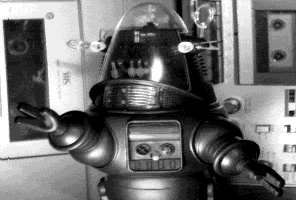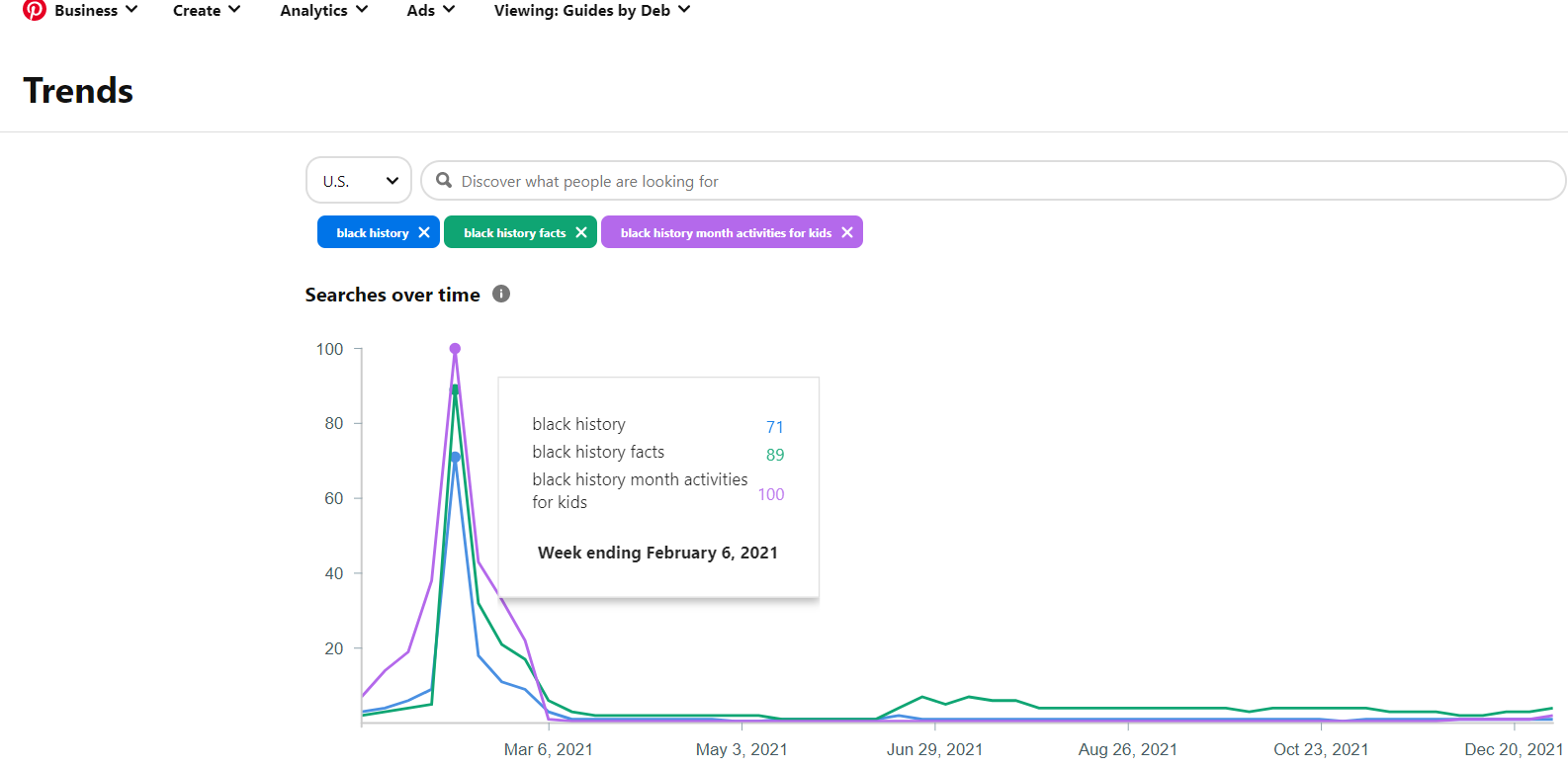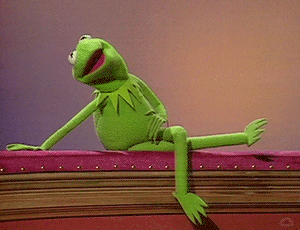Last week, my Pinterest guru hosted a Pin Clinic during which we examined the pinning strategies of some of the most effective Pinterest marketers on the platform. Not only did we scour through pin selections, we also combed through their linked landing pages to discover how they are making it happen. We clicked through platforms produced by high-end food bloggers, cosmetic companies, woo-commerce sites (Did you even know there was such a thing?), interior designers, and yoga masters with an eagle eye to how they addressed the “So What?” Factor.
The “So What?” Factor typifies the what’s-in-it-for-me mindset of the Pinterest user. They come to the platform with their questions, problems, and desires at the forefront of their mind. Then, when intrigued by a well-crafted pin, they click through to discover how the blog post, giveaway invitation, school visit programming, book offers, and/or supplemental educational content might meet their needs. If it resonates, it meets the “So What?” Factor. If not, we have some work to do.
The “So What?” Factor is all about the quality content we offer. Any copy, image, video, or offer we create needs to be created with the intention of establishing a connection with our audience in mind. It’s easy to do, once you get the hang of it. When crafting a post, make sure you address the benefits they will gain by reading it. When promoting a presentation, list the highlights of the event. And, when creating opt-ins, make sure these freebies are something that will make their lives a little bit easier. The “So What” Factor is what makes marketing on Pinterest a slow burn. But, man-oh-man, is it ever worth the effort.
A Case Study Of A Reluctant Marketer: Establishing A Platform For A Platform
Bibbity, bobbity, boo to YOU!
I have a friend whose publishing dream has come true! Like me (and maybe, you), she’s soldiered through the submission, rejection, submission, rejection process like a champ in efforts to achieve her goal. Now it the time to deeply consider establishing marketing strategies that are authentic, helpful, manageable, and fun.
Candy has an active personal, professional, and writing life, leaving little time to master the nuances of Canva or Google Analytics. Yet, she understands that she’ll need to do some work to assure that her picture book biography will gain the visibility it will need to survive. In efforts to get her pre-pub marketing campaign, my wise friend has built a bare-bones, professional marketing account on Pinterest for free! I have plans to chronicle the steps of her process in a series of blog posts for your reference. For now, let’s hit the highlights in three broad steps.
Talk to the bots: Optimized board descriptions using language that Pinterest and Google algorithms understand. This language is called SEO. Each one of Candy’s boards include a descriptive paragraph explaining what type of pins will live in that board. Eventually, her audience will delight in these well-crafted paragraphs. For now, she’s telling the Pinterest and Google algorithms about her debut. And...if they know what is good for them, they’d better sit up and recognize.
Clarify your message: Candy has a rich life surrounded by friends and family. She’s generous to a fault. While these are all noble attributes, Candy has resisted showcasing her favorite recipes and decor ideas on her business account. Her boards reflect her writing life. For example, her passion for history is communicated in her Civil War board. There she can boost visibility for her middle grade novel by surrounding it with like-content pins. Bots love this.
Less is more: Observe that Candy has just nine boards on her platform. She’s off to a grand start. Note that each board is relevant to her Kidlit and nonfiction messaging and are optimized to a tee. She can keep those Pinterest algorithms happy for years by consistently searching for and adding relevant content to her platform. For instance, she might like to add this pin to her Strong Girls board. That would work, right?
That’s enough for now, I'd say. As I mentioned earlier, I’ll blog about this process. It’s not really as heady as it sounds. Not to worry.
I’m also available for one-off webinars and weekend workshops, if you’d like to schedule an event. I love teaching and I love Pinterest. As far as I’m concerned, the two go hand-in-hand!
Pinterest Marketing Dragonslayer
I’ve been serious about wrapping my head around the digital marketing space for close to four years now. The spark for this quest was the confusion/frustration/shame I often experienced while attending conference sessions about digital marketing. I had a book coming out, for gosh sakes! I needed to know this stuff! Yet, those derned presenters (Most of which were millennial cutie-patooties.) kept telling me WHAT I needed to, but never HOW to do it. Obviously, there was a cavern as wide as the Grand Canyon between this Baby Boomer’s skillset and the blather coming out of those tech wizard’s mouths. For me to bridge that gap, I’d have to swallow my pride and figure it out, keystroke by keystroke. I’m still working at it.
As you well know, I’m forever intrigued by the benefits of Pinterest marketing for our Kidlit community. It’s a creature unlike other forms of social media. That’s for certain. (I describe some of the differences here on a video I made for you.) Yet, some the required elements to build a presence on Pinterest platform are similar and can be repurposed on other platforms. Some examples of such elements are branded graphics, opt-ins (freebies that live on your website), and the all-knowing website landing page.
My newest quest is to conquer the Pinterest Promoted Pin, a feat that would cause Heracles to shiver. I’m not going to slay this dragon alone, though. No way. I have my band of gurus as wise as Yoda, my oh-so-brave side-kick, Taylor (She’s available to help you, too.), and a handful of faithful clients joining me. Many are preparing for survival by sharpening their digital marketing tools. Some have made plans to simultaneously market their campaigns on Instagram & Facebook by posting well-timed, resized graphics. A few have created educationally-sound opt-ins as free downloads. We’re all looking at our landing pages to be sure that our messages are clear and easily understood by those who stop by our websites.
We might be in for a perilous journey. I’ll keep you posted as to our progress.
Debbie Gonzales is an author, educator, and a Pinterest Marketing specialist. She’s the host of Guided by Deb, a website consisting of over 300 standards-aligned educator guides for all genres. If you’re interested in learning more about Pinterest marketing, reach out to Deb. She loves talking about all things Pinterest!
Going Evergreen
Yesterday, while scrolling through my Pinterest home feed, one of my old Guides by Deb pins surfaced in the mix. This heart-laced beauty merits a bit of examination. I could geek out by analyzing this treasure in bazillion ways. For now, lucky for you, I’ll stick to just two points.
Anne Bustard’s BUDDY HOLLY pin was part of a campaign we ran in late 2020 in anticipation of hitting the Valentine’s Day 2021 trend. We prepare for campaigns such as on a monthly basis around anticipated trends, themes, or deliberate efforts to build platforms based on a client’s expertise. In this case, we nailed last year's Guides by Deb Valentine’s Day campaign, and it looks like we’re going to do it again in 2022 without any effort at all! Yippee!
Evergreen marketing transcends glitz and fads, which is why I believe so strongly in the power of Pinterest. Rather than surfacing as a digital blip on other forms of social media, this stuff lasts. The secret to posting pins that thrive like a Ponderosa Pine is to link to quality content that is inspirational, authentic, educational, and beneficial for your intended audience. In this case, our charming specimen is linked to a juicy book list and freebies that will make any elementary educator swoon.
I’d like to give a shout out to two other Pinterest marketers that are featured on the screen shot. The Mandela pin on the lower left was posted by the lovely Lindsey McDivitt. I’m not sure when she posted that pin, but I’ve seen it before in other searches. It's doing well. The Idea Pin beneath BUDDY is highlighting a freebie promoting Jeanne Walker Harvey’s MY HANDS SING THE BLUES, which was first posted on August 25, 2021. My guess is that the Pinterest algorithms have linked these gorgeous pins and their time-tested content to the current Black History Month trend (See graph below). You’re going green, ladies. Good for you.
Kermit’s words, “It ain’t easy being green,” pretty much sums up the process of marketing on Pinterest. It requires intriguing content, strategy, planning, patience, and a little bit of luck to find success on this platform. And believe you me…it’s worth the effort.
Debbie Gonzales is an author, educator, and a Pinterest Marketing specialist. She’s the host of Guided by Deb, a website consisting of over 300 standards-aligned educator guides for all genres. If you’re interested in learning more about Pinterest marketing, reach out to Deb. She loves talking about all things Pinterest!
The Reluctant Marketer Rides Again.
Most of us feel reluctance when it comes to calling attention to ourselves, which is what we intuit that marketing is all about. We angst about the time required to establish a platform. We’re baffled regarding the tech skills required. We’re lost when it comes to navigating our way through this confusing digital marketplace. Because of our distress, most of us avoid the topic altogether. Then, when our big moment arrives - we panic! We’re not ready! Help!
It doesn't have to be this way. I promise.
Many of you have heard my Writer’s League of Texas story. I attended their behemoth conference as a novice in early 2008. I was overwhelmed by the masses. How in the world could I become noticed in this multitude of authors, all of whom seemed much more accomplished than I perceived I’d ever become? My dream to become a published author seemed formidable. What the heck was I thinking? Then hope arrived.
I attended a session in which the speaker was practicing some tough love with his audience. He said whether we were published or not, we needed to come to terms with the fact that marketing is simply part of the publishing process. Even back then, he told us that we shouldn’t depend on our publishers to do all of the heavy lifting, that we needed to establish an author platform, and that this could be done through creating content. I had no idea what he was talking about, but I grabbed onto his words like my life depended on it.
He explained that, if we’re serious about publication, we need to host a “blog” on a website (?). On this “blog” we were to create “content” on a consistent basis (Double ??). This “content” was to be founded on interests, ideas, and activities that are unique to us. He said that, if we consistently create this blog content bi-weekly, we will eventually create an author platform that would become a resource for an audience of readers. He told us not to worry if people didn’t come to our blog. Just keep it up. Don’t stop. Well, being serious about publication, I accepted his challenge and established a blog called Simple Saturday. I had fun with that blog for 4 short years AND, I began establishing an audience for my work! I continue to benefit from the experience to this day.
I’m telling this story to encourage you to consider what your authentic messaging might be. What are your interests? Strengths? Passions? How do your interests, strengths and passions inform your writing? Asking yourself these questions will help to establish a solid foundation for your author platform. By doing so, you'll establish clarity and purpose in your messaging. This is what takes the ick of marketing. For real!
I’m eager to hear about your ideas. What are you inspired to share with your audience on a consistent basis? Your poetry? Your crafts? Your joys? Your pets? Your love of reading? Your questions about life? Your angst about marketing? (Now, that’s a good one!)
Let me know if I can help simplify this process for you.
Debbie Gonzales is an author, educator, and a Pinterest Marketing specialist. She’s the host of Guided by Deb, a website consisting of over 300 standards-aligned educator guides for all genres. If you’re interested in learning more about Pinterest marketing, reach out to Deb. She loves talking about all things Pinterest!
Pinterest Marketing Basics: Keep It Simple, Authentic & Fun
I firmly believe that all book creators would benefit by establishing a visibility platform on Pinterest, this goes for pre-published authors and illustrators, as well. Not only is the process in establishing a viable platform highly effective as a marketing tool, Pinterest shines an authentic light on who we are and what we embrace as creatives. This reflection is digitally achieved by intentional connections between one’s Pinterest platform and their website. Here’s how the magic happens.
Pinterest is a tool to amplify a message of service, inspiration, and encouragement for our audience. It’s a visual search engine on which parents, teachers, librarians, millennials, and teens use to find answers, products, and inspiration. Gone are the days when we had the luxury of chatting up a potential buyer at a bookstore or festival. The reality is that purchasing relationships are developed digitally. Our challenge is to first understand how our services and books meet their needs, then establish a pathway for them to land in an intriguing place where they are compelled by a desire to want more than a one-off purchase. We want to make a dynamic, yet personable, connection through our websites. Tall order, yet relatively easy to do.
Too often we focus on embellishing our websites rather than focusing on their functionality and purpose. Slow-loading websites adorned with gizmos dancing across the screen have lost their appeal. Pinterest users want what they want when they want it. If the website seems buggy or confusing, they’ll bounce. Conversely, if they land on captivating content they can connect with, chances are they’ll poke around the website with curiosity. Better yet, they find the content living on the site to be so intriguing, they bookmark it! Bingo! The first steps toward a happy digital relationship have been established!
Award-winning author Barb Rosenstock not only knows how to write award-winning picture book biographies, she’s savvy regarding how to maximize her web presence to assist in marketing her books and programming. Her website layout is one to consider, for sure. The website is packed with practical content to benefit teachers and librarians, while being organized in a clear and succinct manner. It’s attractive, loads easily, and is extremely user-friendly. Though not glitzy, Barb’s website is a shining example of inspiration, education, and of service to those who have the good fortune to land on it.
Much like the revision process, refining our marketing message takes time, especially if we seek to establish something that is genuinely authentic. Our audience is looking for books that resonate with young readers. Take your time to become acquainted with those you desire to market to. The best news is that Pinterest is a long game. Discover the type of content that appeals to them, then experiment with formatting that messaging on your website. The best news is that Pinterest is a long game. It’s a slow burn, which allows plenty of time to thoughtfully establish marketing strategies that edify one’s audience. Most importantly, have fun while doing so!
Debbie Gonzales is an author, educator, and a Pinterest Marketing specialist. She’s the host of Guided by Deb, a website consisting of over 300 standards-aligned educator guides for all genres. If you’re interested in learning more about Pinterest marketing, reach out to Deb. She loves talking about all things Pinterest!
Tips from a Pinterest Marketer: We’re in it to win it together!
Of late, the KidLit industry has been turned on it’s head, to say the very least. The most part, promotional events are still being held online. Actually, book festival promoters, book sellers, and conference hosts have discovered that offering their programming digitally is affordable, accessible, and highly profitable. For those reasons alone, we all need to embrace the digital space as our new marketing frontier. Easier said than done for most of us, right?
We’re used to meeting our audiences face-to-face. We rely on one-to-one conversations about our books, programming and services. We've grown to depend on the personal touch to develop a know-like-and-trust connection with kids, parents, and educators. For many of us, those opportunities are still nonexistent. Well….fiddlesticks! What are we going to do now?
Here’s our plan. We’re going to thoughtfully lean into the digital space with cunning and zeal. To begin with, here is what we are NOT going to do. We’re not going to react in panic by repeatedly posting graphics about ourselves. Nope. Instead, we’re going to shift our thinking to an audience-centric mode. We’ll begin this process by developing the mindset of a successful Pinterest KidLit Marketer.
Step One: Take yourself out of the equation. Successful digital marketers keep their audience’s needs, wants & desires at the forefront. We must set aside our angst and explore ways to inspire, educate, encourage, entertain and entice our peeps to click through to our content. Once we land a greatly-appreciated click-though, we want to set sights on developing a relationship. There are a number of ways to achieve this goal. For now, just consider ways to edify them first. As one of my clients said, “I like that Pinterest is all about the other and not about me. It feels right.” I agree, wholeheartedly.
Step Two: Give something away. Create something of value for your audience to access for free from your website. Think thoughtful trinkets. You can go grandiose by offering a multi-paged educator guide or tiny by an invitation to register for a fifteen minute free Face Time read aloud. Since we are not able to schlep our swag at a book festival table, we have to make it digital. But most of all...we must make it fun.
Step Three: Stay in it to win it. As it goes with any worthwhile endeavor, establishing visibility on Pinterest requires posting consistently, whatever consistently means to you. Once a week. Twice a week. Daily. Always keep in mind , it’s not YOU that your audience is looking for. (Ouch, right?) It’s your authentically genuine messaging that will catch their eye. They're looking for tangible ways your CONTENT, including your books, can solve a problem, answer a question, or serve as a vehicle of encouragement and/or of inspiration.
The strategy we’re going to take is to lead with THEM in mind. Not us. We’ll work to anticipate their needs by examining ways that we can be exceedingly helpful. Showcasing book lists. How-to videos. Tips and tricks of the trade. Things like that. (Don’t worry. All of the good things you’ve done and are doing to this point will not go to waste. All those awards and accolades are important, for sure. Good for you!)
We’ve got this. We’re in it to win it together!
Debbie Gonzales is an author, educator and a Pinterest Management Specialist. Learn more about Deb and her many fascinating projects at debbiegonzales.com and guidesbydeb.com.






















